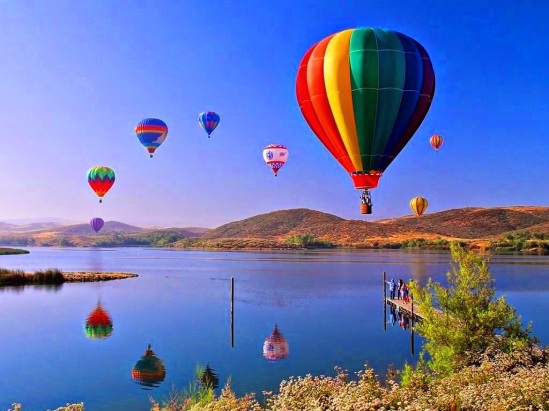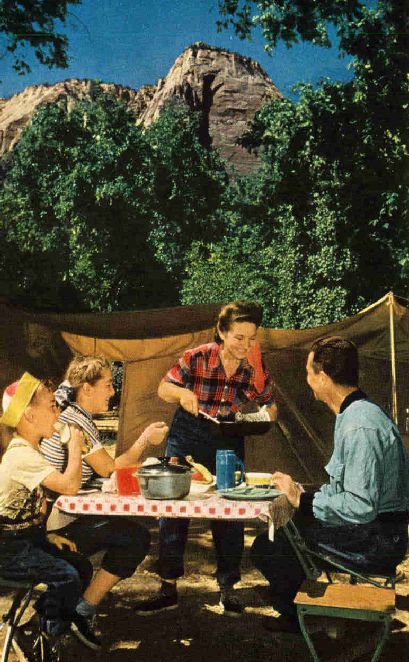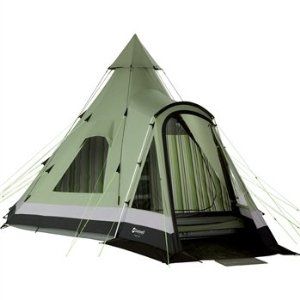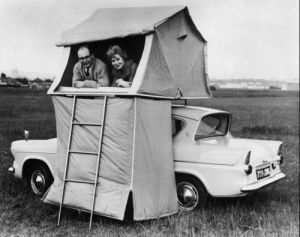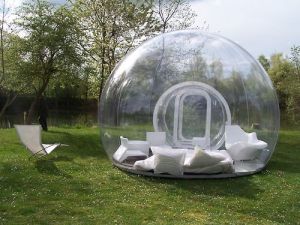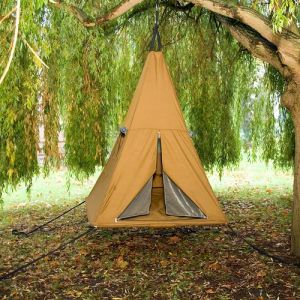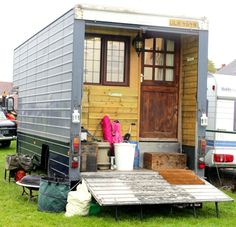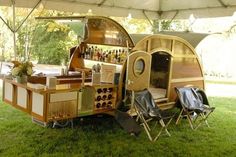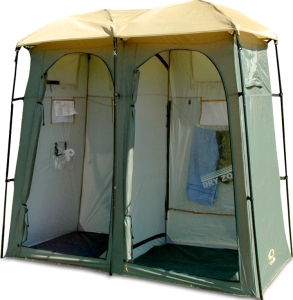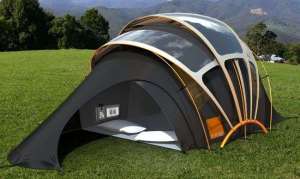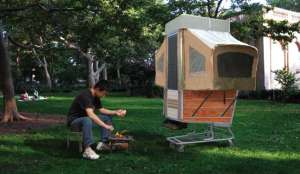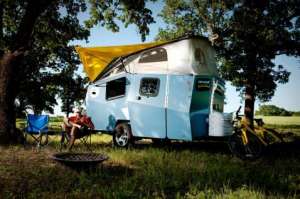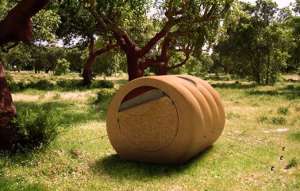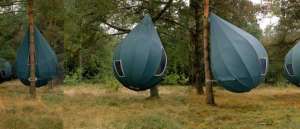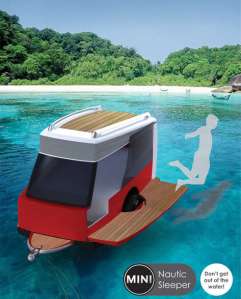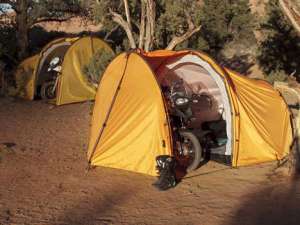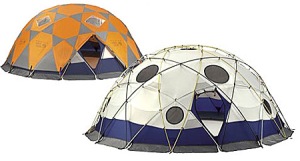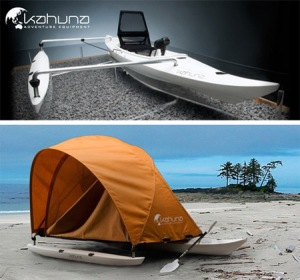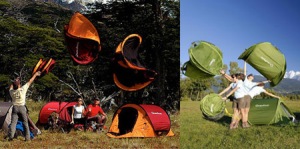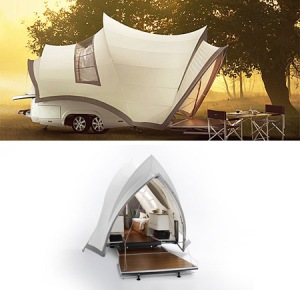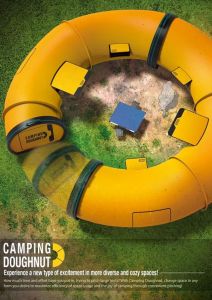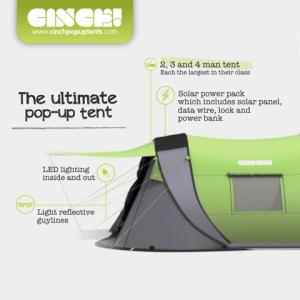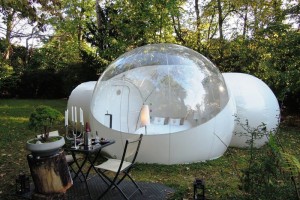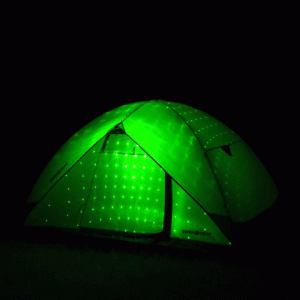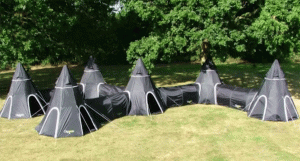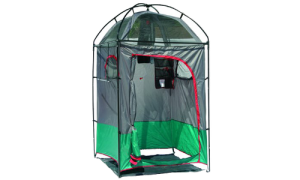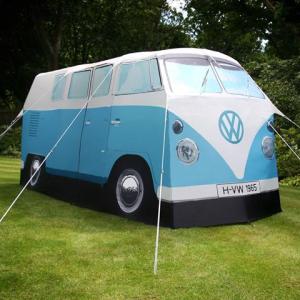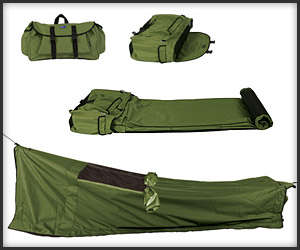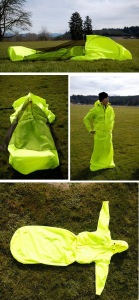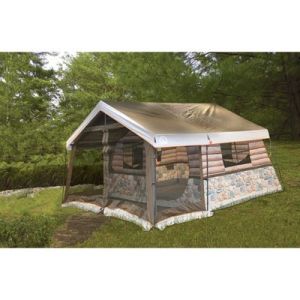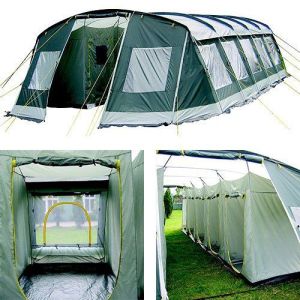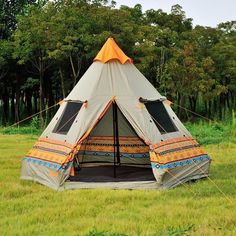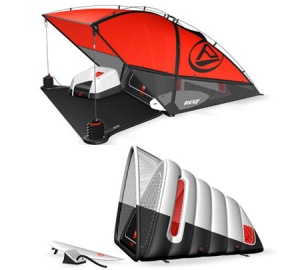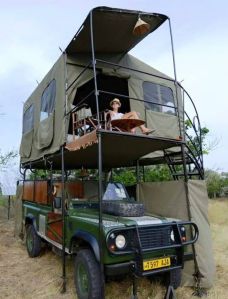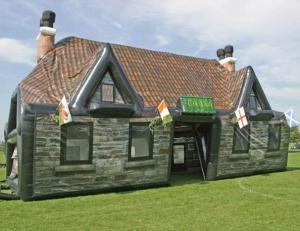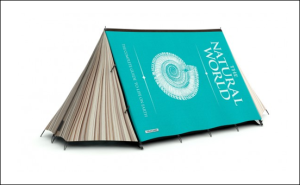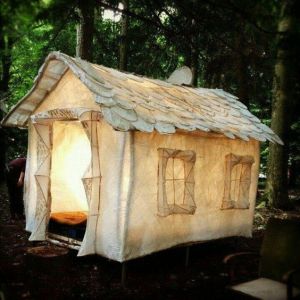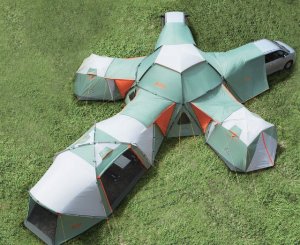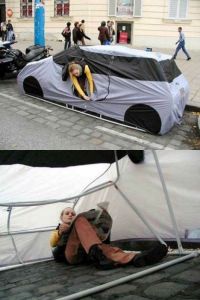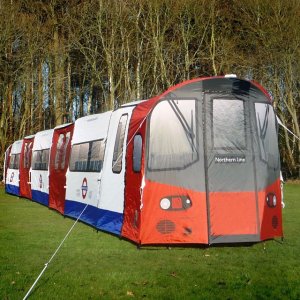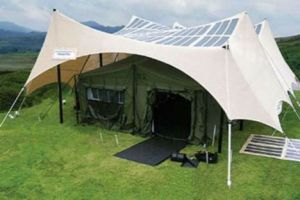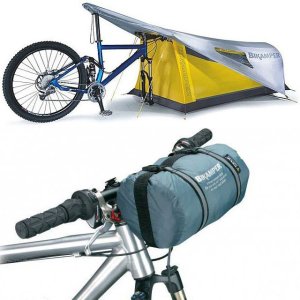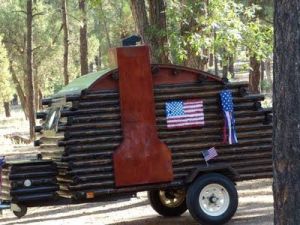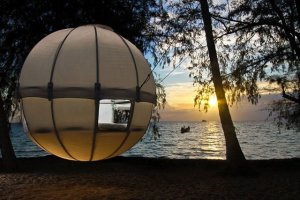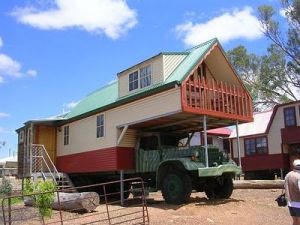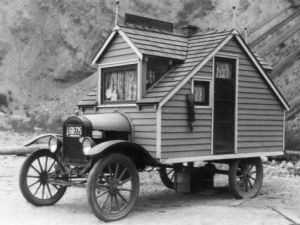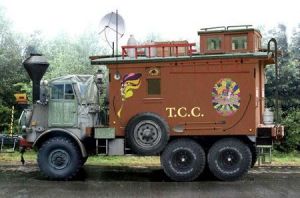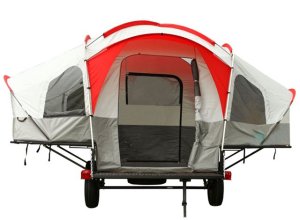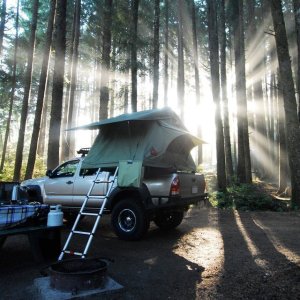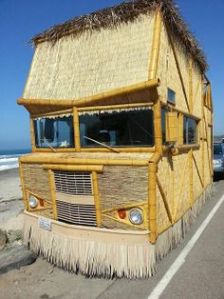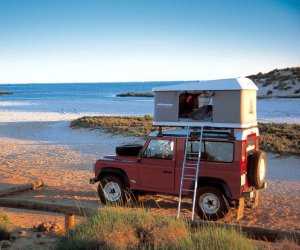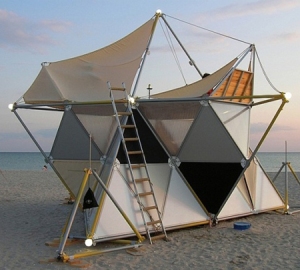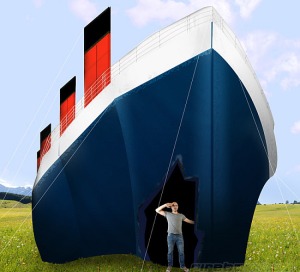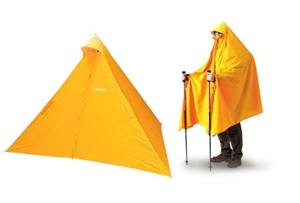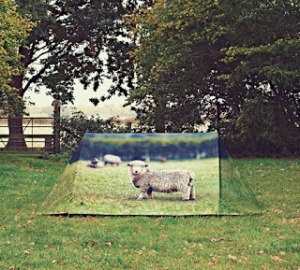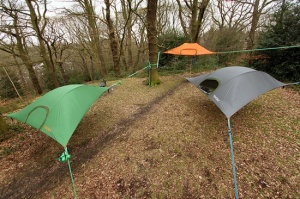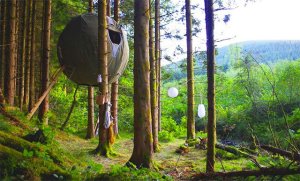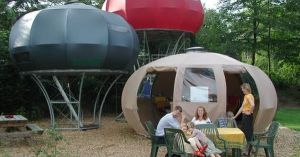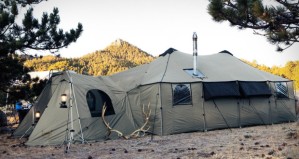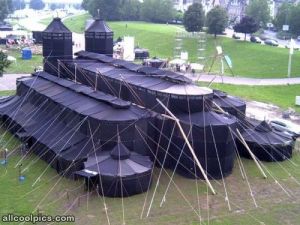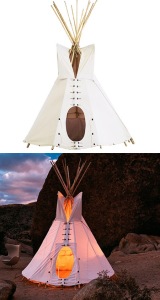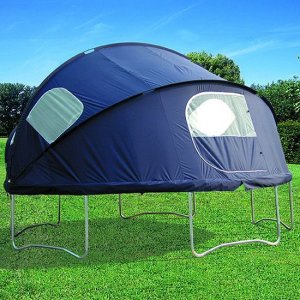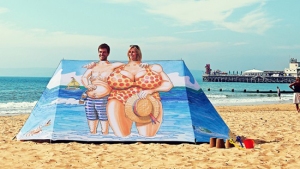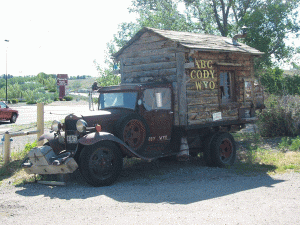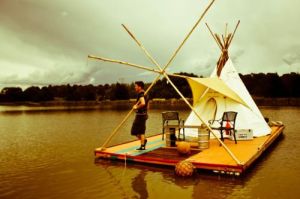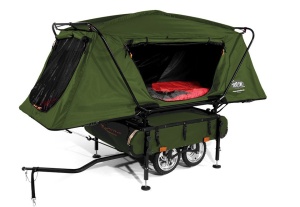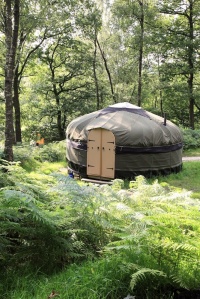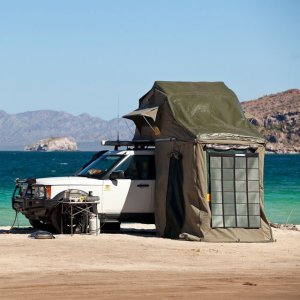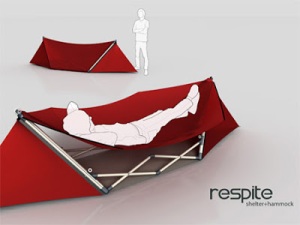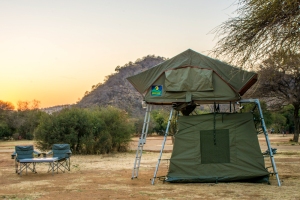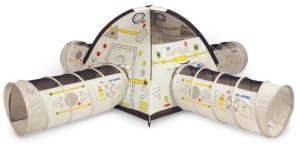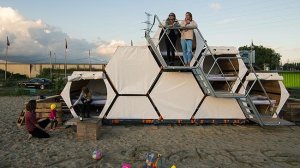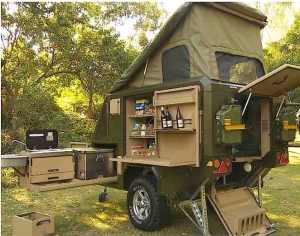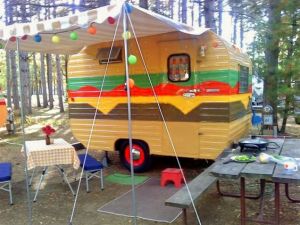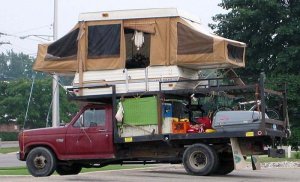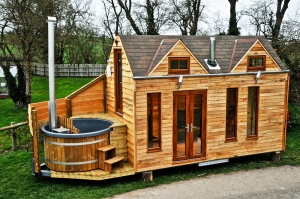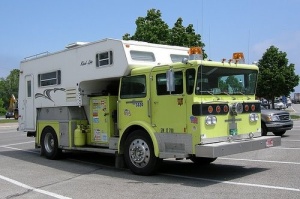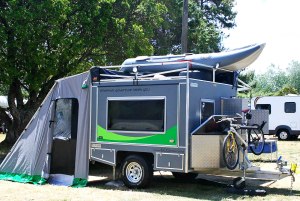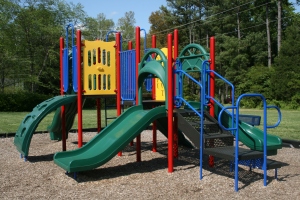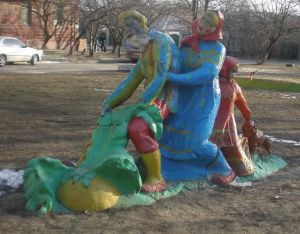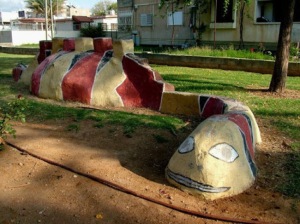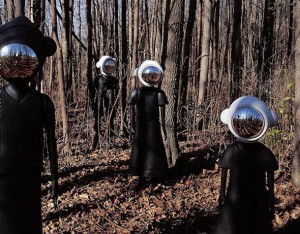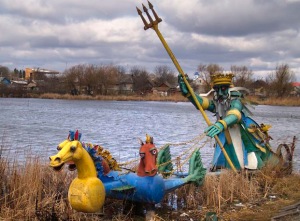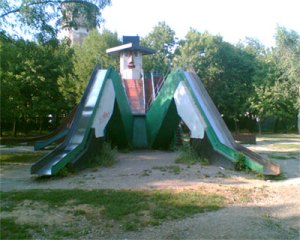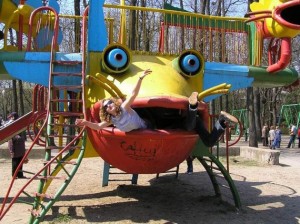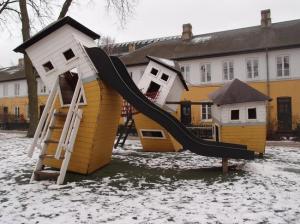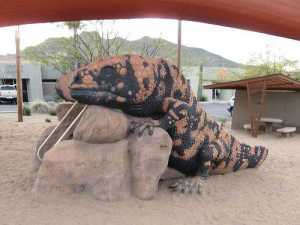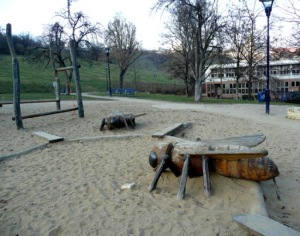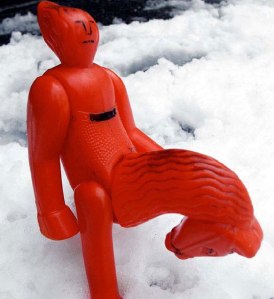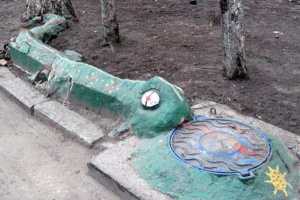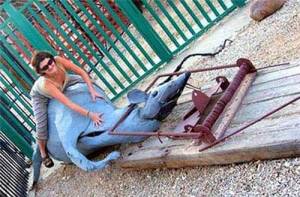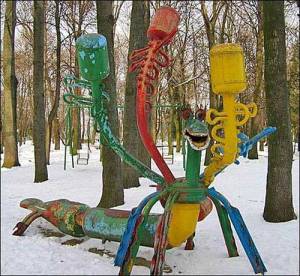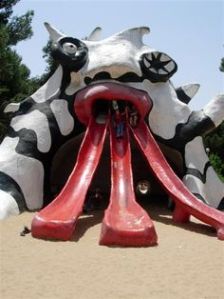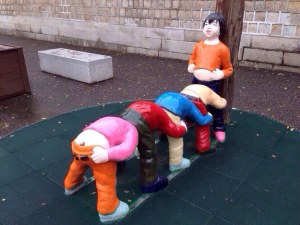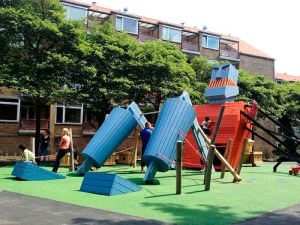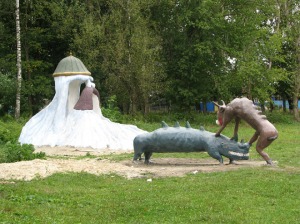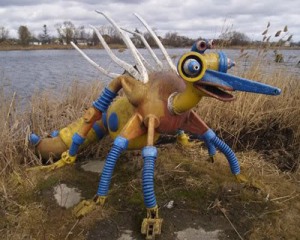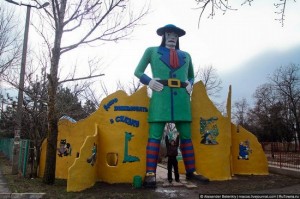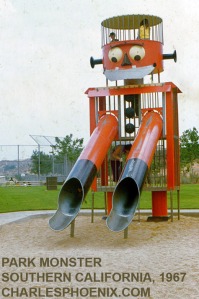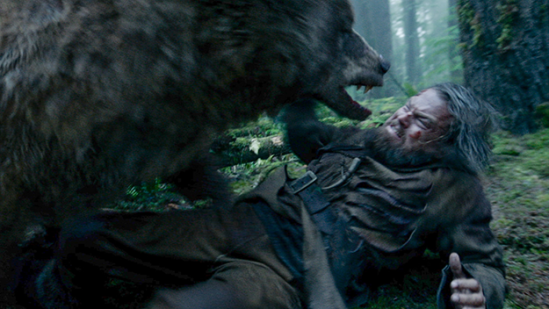
Since Daniel Defoe wrote Robinson Crusoe and even before then, survival stories have always been a source of endless entertainment to the masses living in civilization. Today you have survival movies like Castaway and The Revenant along with TV series like Lost and The Walking Dead, and even reality programs like Survivor or stuff from the Discovery Channel. Many of what you see about surviving in the wilderness or devastated urban environment isn’t necessarily what’s going to help you in real life. Reality shows have camera crews and don’t really depict reality anyway. And survival stories that took place in historical times may feature characters that do stuff that violate basic common sense. Here I have a list of survival tips you get from movies and why they’re totally wrong.
It’s likely that you will suddenly end up in a classic survival scenario. (Most people who end up in a classic survival scenario usually do so through a series of bad decisions that, if you don’t take immediate action, you might die. Real survival isn’t about being the toughest and most experienced, but keeping out of those situations through basic common sense. Not to mention, being flexible as well as swallowing stubbornness and pride. For instance, a lot of your classic survival heroes probably wouldn’t be in such situations if they {or someone else} didn’t make the decision to travel to the location in the first place. Still, if you’re fishing in a lake when you see lightning, get off the lake. It’s that simple).
You can live off the land with no problem. (From How to Survive It: “When the settlers landed on Plymouth Rock, they had plenty of experience living off the land (hunting, foraging, farming, etc.) and were well-versed in primitive skills like fire-starting and making the most of natural resources, yet they still nearly starved to death. Today there are fewer wild animals and edible plants and far more people than then, and few people possess even a fraction of the skills that our settlers had. If living off the land is your only plan to sustain yourself and your family, you’re in for some rough, potentially deadly times.”)
A gun is the most important thing you’ll need. (Guns may be great to have when surviving the wilderness or a post-apocalyptic scenario, but they will not help you if you’re thirsty or have a medical emergency. While a gun may protect you from criminals {though not always reliably}, you’re more likely to die of disease or accidents. So unless you’re in a situation similar to Oregon Trail, you’re better off stocking on food and medical supplies before buying a gun).
You don’t need to prepare for survival in a short hike. (Even short hikes can become dire survival situations. The weather may get bad. You might get lost or injured. Always have a few key items with you before you venture into the outdoors like extra clothes, a map, a compass, a flashlight, first aid kit, as well as extra snacks and water. Also, always let someone know where you’re going and when you plan to come back so they could notify a search party to rescue you if you don’t).
If you get into trouble, you can always be lifted to a hospital by helicopter. (Not if the area doesn’t have cell phone reception. Or if there’s severe weather conditions. Or in places where helicopters can’t reach you. If you’re hiking in South America, you will not have a helicopter to rescue you and emergencies must be handled by guides, porters, and other hikers. Some may not be able to speak English. And even if a helicopter rescue is possible, there’s still the matter of getting in touch with someone who can send it).
Space blankets are useless. (From Outdoor Life: “Those Mylar-coated emergency blankets certainly don’t look very warm. How on earth can something no thicker than a trash bag save your life? Well, though the aluminum coating on these blankets is very thin, it is thermal-reflective. In other words, it can redirect infrared energy, which means that it reflects heat. When you are getting cold due to shock or exposure, it’s because the heat you were radiating is lost to the air and not replaced. With a space blanket wrapped around you, however, the moisture in your clothes won’t evaporate {which causes cooling} and you won’t lose as much heat to the air moving around you {limiting convective heat loss}. So you will stay warm when you’re wrapped up in this sheet that looks like tin foil. And since these lifesaving blankets pack down so small and are so cheap, there’s no reason to run around in the bush without carrying a few of them.”)
You can depend on your cell phone to save you. (If you’re miles away from civilization, this might not be the case. Besides, batteries die, reception is spotty, and your phone isn’t invincible. You’re better off being appropriately prepared and letting people know where you’re going and when you’ll return. So if you don’t come back within a certain amount of time, that person can trigger a search and rescue operation for you).
Being able to survive in the wilderness takes a lot of skills and physical fitness. (This isn’t necessarily true because ordinary and unassuming men, women, and children can also survive and have as long as they have the will, the positive-realistic attitude, and the emotional resilience to endure. Also, it helps that you’re smart and use common sense as well as don’t get yourself in a deadly scenario).
Wearing wet clothes is better than no clothes at all. (From Survive All: “Water has a nasty habit of holding on to its temperature for long periods of time, so if you have just fallen through ice and you get out and keep your clothes on, all you are doing is keeping yourself cold. You are better off naked than in wet clothes.” Yeah, probably don’t want to risk getting hypothermia).
Wait a day or more to see if help arrives before starting anything. (Always plan if help isn’t coming though hope it does).
Dead or dormant poison ivy can’t hurt you. (From Backpacker: “Urushiol, the oil in poison ivy that prompts allergic reactions when in contact with skin, remains active for several years after the plant dies. Furthermore, the urushiol is not just in the leaves of the plant, but is also present in the roots and stems. So how do you pinpoint poison ivy when there are no leaves? Luckily, this toxic plant produces aerial roots, making the vines appear “hairy”—a handy sign for shoulder-season hikers.”)
Shelter:
Shelter means coverage. (Adequate shelter has very little to do with coverage and everything to do with protection from the elements. In a hot sunny climate, this means shade. In cold or temperate climate, this means warmth. Poorly built shacks with roofs and walls are a poor way to protect yourself from the cold. Making a small nest that insulates the ground and provides some wind protection vastly recommended before building a roof).
Lean-tos make great shelters. (Yes, they look cool and are easy, but it’s better to go with something that has 4 walls, a doorway, and a roof. And if it’s cold, try to insulate the ground before building a roof.)
During a thunderstorm, it’s best to seek shelter from lightning under a tree. (Since I was a kid, I knew hiding under a tree during a thunderstorm is just absolutely insane. Lightning is attracted to height, pointy objects, and isolation, which are often associated with trees. Also, unlike skyscrapers, towers, and other tall buildings, trees don’t have lightning rods. Best to seek shelter in a home or car. And if these aren’t options, crouch down on the balls of your feet. If you’re in a group do so at least 100 yards from the other members of your party to reduce the risk of being hit together, allowing the others to administer CPR if necessary. Lying flat on the ground might lower your profile even more but it increases your chance of picking up the ground current and it’s not advised).
Shelters should be built from dead materials. (From The Good Survivalist: “This one came from our friends in the ‘green’ survival movement. They are far more concerned that a few trees might get killed than they are about your life. All advice from them should be considered highly suspect. Imagine building your shelter as a big pile of dead leaves and wood. Now imagine having a campfire anywhere near that. Do you really want to climb in there and go to sleep? Nuff’ said.” Chopping down a few trees for a shelter the forest isn’t going to contribute to deforestation much).
Navigation:
You’ll never get lost with a GPS. (From Outdoor Life: “If you can afford one, you should always take a GPS unit with you into the backcountry. These high-tech navigational tools are easy to use, and more important, they always let you know where you are. But they aren’t a fail-safe against getting lost. If you misplace or break the unit, or your batteries die, you’d better have a map and compass (and the knowledge to use them) as a backup. Navigation isn’t just about knowing where you are; it’s about knowing which way to go as well.”)
Always walk your way to safety. (In some situations, conserving energy and hydrating might be your best bet like in the desert. It’s also best that you take 30 minute breaks to let the adrenaline flush out of your system so you can make decisions with a clear frame of mind as well as assess your injuries, which is often overlooked in survival manuals).
It’s always a good idea to climb a tree to look for the trail ahead. (From Getting Out Alive: “Although gaining a high vantage point can give you a better view of things ahead, climbing a tree is both exhausting and dangerous and is not worth the energy expenditure, nor the risk of injury.”)
As long as you can find North, you can navigate to safety. (From Getting Out Alive: “North is meaningless unless you know which direction you must travel to reach safety. Knowing where you are in relation to a safe destination is the only important issue.”)
Always hike through the night to avoid the heat during the day. (From Getting Out Alive: “In hot regions, use the morning hours for hiking, from just after daybreak until the heat comes up. Hunker down during the heat of the day, but do not travel through the night or you risk injury or becoming lost.”)
Always travel swiftly to get out of a survival situation as quickly as possible. (Travel cautiously and avoid injury at all cost. Because suffering an injury might be the very thing that kills you.)
Wildlife:
Holding a baby animal in front of its parents will not bring you any harm. Heck, the adult animals may even let you hold their cubs. (This was in Disney’s Pocahontas. Holding a baby animal in front of its parents will result in an emergency room visit or some time in the ICU if you’re lucky {assuming the animal is large enough like a deer or a bear}. Because doing so will lead its parents to perceive you as a threat and they will attack you. If you value your life, do not go anywhere near baby animals. If you see a helpless baby animal that’s alone for more than 24 hours, malnourished, or sick call animal control if you can. Else, just beat it and leave the animal alone. Sure it might fall prey to predators or the elements, but at least you’ll be alive. Note that what you see happen to Leonardo DiCaprio in The Revenant was not something most people survived without medical treatment. In fact, quite the contrary {though Leo’s case in that movie can be excused since the real Hugh Glass was attacked by a bear in the 1820s and did survive but it was through sheer dumb luck [because we do know he was killed by Native Americans in 1833]. And it’s unlikely that the bear attacked him that way since it would’ve paralyzed him. Still, while Fitzgerald and Bridger left Glass for dead, they did so because they were so convinced he wouldn’t survive}).
You can always count on the woodland creatures to help you when you’re stranded in the woods. (Sorry, but this isn’t Snow White for crying out loud. Seriously, the best way the woodland creatures could help you is by being your dinner).
Always punch an attacking shark in the nose. (Most people lack the upper body strength to strike a blow powerful enough to stun a shark, especially when punching in the water. Shark attack experts generally recommend clawing the shark in the gills and eyes instead. Because sharks will naturally try to protect their vision and respiration capabilities. A sharp blow or a scratch to either may be enough to scare a shark away. Sharks look for easy prey and most won’t risk safety for a quick meal.)
If a bear approaches you, just play dead. (Maybe if it’s a mother grizzly defending her cubs. But if it’s any other kind of bear {namely a black bear which you’re more likely to encounter in North America}, it might attack you anyway. Your best bet is making yourself look intimidating which can be accomplished by opening your jacket, spreading out your arms, and shouting. Hopefully the bear would be spooked and run away. Also avoid making eye contact with a grizzly or it might consider it a challenge).
When in contact with a bear, the best way to avoid an attack is to out run it. (If you run into a bear, don’t ever try to outrun it. Because you can’t. Bears run at 30mph which is faster than Usain Bolt. Yes, even he can’t outrun a bear, let alone you. Instead, stay where you are. If it’s a black bear, make yourself look big such as opening your coat, holding out your arms over your head, as well as shout and scream until it’s spooked and takes off. If it’s a grizzly, avoid eye contact and back away slowly. If it charges, stand your ground. If it makes physical contact, cover your vitals and play dead. Either way, bring bear or pepper spray).
If you come across a sick or injured animal, try to help it. (Stay the hell away from it or run like hell. Because sick and wounded animals can be very dangerous, especially if they have rabies. Besides, wounded animals can still attack you. Best to call animal control if you can).
Water is a good escape from a bee attack. (I’ve seen this a lot in movies, TV, and cartoons. Nevertheless, despite multiple accounts of people avoiding swarms doing so, they proved to be fruitless since the bees were there waiting when the people came up for air. Instead of running into the water, seek refuge in a car or building. If these options aren’t available, just keep running, especially through a brush or thicket. Bees have been known to pursue people for half a mile and the run will be worth a reprieve).
Wildlife is always your biggest problem. (As long as you don’t do anything to disturb or try to feed them, the animals will not bother you. You’re more likely to encounter a wild animal in more urbanized areas than in the woods. Then again, this might be relevant in Africa, but if your stranded in North America, wildlife is the least of your worries).
Immediately put up protection against animals like wolves. (The best you can protect yourself against an animal is to stay away from It and don’t do anything to piss them off. If you don’t bother them, they won’t bother you. Besides, predators like wolves are more interested in easy prey. A big fire is normally enough).
Garlic repels mosquitoes. (What repels mosquitoes is mosquito repellant like DEET, not garlic.)
Venomous snakes have triangular heads. (A snake’s head shape is irrelevant on whether it’s poisonous or not).
Bears are only active at dawn or dusk. (Bears can be active at any time of the day but are mostly out at dusk).
First Aid:
If you or your friend is bitten by a poisonous snake, cutting an “X” and orally sucking is advised. (Yes, this method was used by 19th century American pioneers which you see in westerns, where it would be appropriate. But like a lot of 19th century medical advice, this is idiotic and disgusting as well as medically worthless. What’s best advised is washing the wound, putting a bandage on it, and seeking medical attention immediately such as calling 911. Because sucking the venom poses a risk for both the victim and the person sucking the poison out {even if one’s careful not the swallow the envenomed blood}. And if there are sores on the mouth, the venom may likely end up in the sucker’s bloodstream. In addition, consider the pathogens present in a person’s mouth. Still, it’s better to prevent poisonous snake bites by simply not putting your hands or feet where you can’t see. Also a dead rattlesnake can still bite you long after it’s been squished on the highway since its bite reflex is still intact for several hours. In addition, out of the 5600 who get bitten by rattlesnakes in North America, only 5 or 6 died while 30% only experienced a dry bite, meaning there may not be poison in the bite at all).
If CPR doesn’t work, then it’s perfectly fine to strike random hammer fists to the center of a victim’s heart to restart the heart. (This is called a precordial thump, and it’s not a free beating, but a precisely aimed blow delivered by an expert in an attempt to interrupt a life-threatening rhythm if there’s no defibrillator available and can only be attempted once).
To treat frostbite, rub the frozen tissue with snow or immerse it in cold water. (Immerse the tissue in warm water but only when it’s certain the tissue won’t refreeze. Otherwise, doing so will only increase risk of permanent damage just like rubbing it with snow or immersing it in cold water would. You could also use painkillers if available).
If someone is suffering from hypothermia, it’s best that you throw them in hot water. (This would actually cause their core temperature to shoot right up, inviting the colder fluid from the extremities in. Such treatment would make the person even colder or worse mess up their heart. While alcohol can create a quick rush of warmth by dilating blood vessels, the same effect can cause a faster and very dangerous drop in temperature. Also keep in mind about causing excruciating pain or a heart attack. Better to put hot water bottles in both armpits or skin to skin rewarming).
Giving alcohol to someone suffering from hypothermia always keeps them warm. (Alcohol only gives you the illusion of warmth when you’re freezing but actually drops your core temperature. Might make you feel better for a few minutes even though it’s actually killing you faster).
If someone isn’t breathing or if there’s no pulse, slapping your unconscious buddy a couple of times after getting all angry and yelling at them will make them come around. (Best to move them to a place with cell phone reception and call 911).
Treat burns with butter or oil. (Butter or oil will worsen any burn from sunburn to 3rd degree and possibly get it infected. Skin that’s recently burned/still burning is 1st or 2nd degree (like sunburns, contact with a hot object, dropped cigarette on leg, etc.), immerse it in spray or spray it with cool water to stop ongoing damage. If it’s 3rd degree, then try to keep it cool and clean, but call 911 and wait for professionals to arrive rather than using cold running water).
Always remove impaling foreign objects from wounds. (Dr. McCoy does this to Spock in the new Star Trek movie even though he should’ve known better. From TV Tropes: “Generally they’ve smashed all the bits they’re going to smash, and are now acting as a plug on the wound – and an infection can be fought off with antibiotics at the hospital. Pull the plug, and you may be dead in minutes. Barbed weapons might tear more flesh and if they don’t, you’re unlikely to be able to pull it out at the exact angle it went in.” So if you’re in a wilderness area with cell phone reception, just call 911. If not, then get to one).
Bullets should always be removed from gunshot wounds. (Hunting seasons aside, getting shot in the wilderness isn’t very likely to happen in real life. But in movies and TV, you might see this a lot, especially in war or post-apocalypse movies. A bullet can remain undetected inside someone for years and not cause any problems. The only times when a bullet should be removed is if it’s still traveling in the body, its becoming dislodged can cause fatal injury {in which case the doctors want to remove it in a controlled environment rather than it becoming dislodged on its own at random}, or if it’s serving as a source of infection or immune reaction. This despite the fact that firing a bullet heats it to the point that most possibilities of infection would be gone. In fact, getting the bullet out is usually the last thing surgeons bother to do. Also consider the fact that Andrew Jackson was shot close to his heart and lived with that bullet in his chest for decades and he was around during the 19th century).
Is someone is bleeding, always use a tourniquet to stop it, such as from clothing. (This is a very bad idea. As TV Tropes put it, “In real life the clothing will probably stick to the drying blood, causing other problems later when real help arrives. If the tourniquet is left on the limb in question for too long, this will result in the limb becoming necrotic and falling off or getting Compartment Syndrome. This one is subject to a bit of Science Marches On as the US Army, who have been using makeshift tourniquets out of cravats and windlasses {basically bandannas and sticks} for decades, have shown that advances in combat medicine allow a limb to have a tourniquet applied and blood flow completely cut off for up to 2 hours without permanent damage and up to 4 hours while still keeping the limb. This has gained modern tourniquets such as the CAT {Combat Application Tourniquet} a place in the gear of most modern combat soldiers, and indeed, is the US Military’s preferred method of treatment for significant extremity hemorrhage and/or total limb amputation. The current consensus is that when used properly tourniquets work, but should only be used under specific circumstances by professionals unless the situation is that dire. ‘Dire’ in this case meaning that the person is almost certain to die from blood loss before any professional medical aid arrives on site, typically meaning a limb being fully severed.” You’re better off using plain old bandages.)
If someone has consumed something poisonous or infectious, induce vomiting. (If they aren’t already vomiting, just call 911 or get them to a hospital. And if they are, do the same. Supportive treatment begun early often does far more good than trying to purge the substance from the body. Also, in some cases a drug, alcohol, or other overdose can cause unconsciousness and someone vomiting can breathe in their own vomit, complicating potential survival with a nasty case of pneumonia or asphyxiation. You can also call the poison control hotline which can offer expert advice and specific instructions for the particular poison ingested {if known}. However, if these guys say to induce vomiting, this is a situational precaution and shouldn’t be attempted unless it’s known for certain that it’s the right thing to do).
Always give someone a laxative to someone experiencing unknown stomach or intestinal pain. (Laxatives are meant to treat constipation and should only be administered if there’s no lower abdominal pain worse than mild discomfort that has persisted no longer than a week and when the obstruction is only known to be poop. Otherwise, just call 911 and get them to a hospital if that option is available. If not, then just use a signal to get a rescue party, pronto. If they have appendicitis, giving a laxative can lead to a ruptured appendix, horrific peritonitis infection, and possibly death. If they have an immobile object, their entire large intestine, leading to almost to certain death).
Always take dressing off of bleeding wounds and apply new ones. (This is a bad idea since it doesn’t give the blood enough time to clot and possibly removes clots already formed. The correct course is to add new bandaging over that’s already soaked through as needed, and even if you wind up with a huge wad of bandaging that’s unruly, it’s still better than disrupting the clotting process).
Open wounds should immediately be closed in all cases. (Dr. McCoy does this to Spock in the new Star Trek movie, even though he knows this isn’t the best treatment for him {though neither was removing a metal object from him either}. Then you see Leo cauterize a neck wound in The Revenant which is pretty drastic as well as certainly not a safe and sanitary option {yet, since this movie takes place in the 1820s, it can be forgiven. But you shouldn’t try it}. Though to be fair, he didn’t have many options since the wound was close to Spock’s heart and he would’ve bled to death if he hadn’t. However, according to TV Tropes: “While most wounds get cleaned and immediately shut, deep wounds, especially infected ones, often stay open. Treatment of big abscesses or infected wounds often involves opening it, cleaning it and then leaving it open for a few days {with a bandage IN the wound to keep it open and a plaster over it to keep it clean and avoid fluids sipping out}. This allows the tissue to heal from bottom up and the doctors to check on the infection and keep it clean. Instantly sewing it shut would close the hole, inviting bacteria to create a new or even worse infection which could lead to a lethal sepsis {blood poisoning}.” So if you have deep wounds, best call 911 if you can).
Wounds should never get in contact with water unless it’s a burn. (Those who’ve had surgery usually find that saunas and swimming pools are forbidden but showering is okay as long as the wound itself isn’t covered in soap {run water is fine}. In many cases, washing the wound is often encouraged such as when there’s a risk for infection. Certain abscess cases even might involve the patient holding the shower head straight at the wound and using the water pressure to thoroughly clean it).
When someone goes into shock, assume the victim is fine if there’s no blood flowing or anything stuck in them. (From TV Tropes: “Anyone trained in first aid can tell you that shock {the body failing to circulate blood properly} is actually one of the more dangerous threats posed to almost any accident victim. Many cases of shock can stem from what amounts to the body creating errors while responding to stressful stimuli, which means that even a comparatively minor wound {such as a cut on the thumb} can throw a person into shock. Symptoms can be anything from anxiety and confusion to irregular pulse and blackouts, and it’s not unheard of for a patient who at first glance does not appear to have any life-threatening injuries to die from shock simply because the body unintentionally shut itself down. One of the best ways to prevent shock is to simply interact with the patient in a reassuring and calm tone, as well as keeping them warm and ensuring proper blood flow to the head and vital organs {usually achieved by propping up the legs}.”)
If someone is not breathing or there’s no process, provide mouth on mouth and compression CPR. (The purpose of CPR is to buy time until advanced help is available by circulating blood and preventing brain damage from lack of oxygen. And you’re not supposed to give up after a minute or 2 just because they haven’t started breathing on their own, but rather continue until advanced help gets there. It’s also expected for the victim’s ribs to get broken during CPR, something that almost never happens on TV. Still, CPR rarely results in a full recovery and if the person’s heart and breathing have actually stopped to the point of needing it, chances of recovery at all is usually less than 10%. Even if the proper medical care can be brought in time to keep them from outright dying, such patients generally die within 1-2 years. Also, there’s a large chance of permanent brain damage. Not only that, but remember that CPR alone does not revive someone. And do not attempt to do CPR if someone collapses from cyanide poisoning because doing so will end up killing you).
Booze always makes a great wound disinfectant and anesthetic. (Well, rubbing alcohol is great as a disinfectant. But other than that, this advice belongs in the 19th century).
Booze is always great to have when it comes to surviving in the desert. (Sorry but booze can cause dehydration).
Hypothermia only happens in cold climates. (It can happen in wet environments as well as at higher elevations. So stay dry and warm in order to prevent your temperature from dropping to dangerous levels).
Don’t feed a victim of hypothermia. (From Outdoor Life: “Normal shock treatment and hypothermia treatment are different—you don’t, for example, want to feed someone who may be going into shock because he can vomit and choke while unconscious. However, in mild to moderate hypothermia cases, high-calorie foods can be given in small, repeated doses to create metabolic heat in the victim and help him restore his own heat-generating ability.” Unfortunately, shock treatment and hypothermia treatment are practically indistinguishable in Hollywood).
Let a hypothermia victim get some sleep. (From Outdoor Life: “After the shivering, confusion, slurred speech, and clumsiness of hypothermia have manifested, an exposure victim also gets drowsy. This is a serious warning sign because sleep can lead to death. Keep the victim awake as you warm him up.”)
Always use fire to remove an embedded tick. (Since ticks cause frustrating and debilitating illnesses like Lyme disease, there’s a lot of confusion to approach this. The medical community currently advocates taking fine tipped tweezers and gently pulling the tick out by the mouth, which helps avoid releasing as much infected fluid as possible. Grabbing the tick by the body only leads to a higher risk while smothering or applying fire should be avoided as well because these tactics cause infection. After the tick’s removed, wash hands and wound thoroughly after the tick has been removed).
If you suffered a sprained ankle, best to apply warmth immediately. (From Trails.com: “How to treat a badly sprained ankle, which for a hiker or backpacker can be a serious situation when out in the wilderness, has always been subject to myth, with a large portion of the population thinking that warmth should immediately be applied. However, the opposite is true since heat will make the swelling and pain increase and slow down the healing process. If you spend time on trails and out camping, remember the acronym RICE. This stands for Rest, Ice, Compression and Elevation. The ankle should be quickly rested and iced if possible or soaked in cold water from a stream. Even snow can be used as a substitute for ice. Ice the ankle for 20 minutes to half an hour and then put a compression bandage such as an elastic wrap on it to give it support. Elevate the affected foot. Repeat this procedure up to four or five times a day until the swelling goes down.”
Water:
If you run out of water, drinking your own pee will keep you hydrated. (From The Clymb: “Your pee probably won’t kill you, but depending on your location, it might do more harm than good. If you are dehydrated in an extremely hot environment, drinking your urine will put unnecessary stress on your kidneys, which in turn puts unnecessary stress on your body and leads to more overheating. Drinking urine is an acceptable short-term solution to dehydration in cooler climates, but is not the best idea in a heatstroke situation. In cases of dehydration combined with heat stroke, using the urine to soak a small bandana for evaporative cooling may be more effective.”)
Boiled water is always 100% safe to drink. (While boiling water can kill organisms and germs, it will not clean harmful particulates from it. For instance, no matter how long you boil chemically contaminated water, it won’t be safe to drink. Same goes with stagnant dirty water, too. And there’s a good chance the water you get will have dirt in it so it’s best to filter it out through a clean fabric or leave it to stand until the sediments sink to the water first. And then boil it preferably at 212 degrees Fahrenheit for a minute so the little microbes could die).
You can follow flying birds to find water. (From Outdoor Life: “While some aquatic birds rarely leave the water’s edge, others roam far and wide for food. It’s been said that geese fly toward water at dusk, but this isn’t always the case. They could simply be flying toward a known clearing to spend the night. Since we have no way of knowing a bird’s plans for the evening, we can’t rely on it to lead us anywhere.”)
Drink raw blood to survive and keep hydrated. (From Outdoor Life: “Sure, there’s water in blood. And some of the traditional cattle cultures of Africa still consume cattle blood with milk, but this is done for protein and minerals rather than hydration. While the consumption of animal blood has helped to keep survivors alive, the risk may not justify the gain. Drinking raw blood could mean you’re consuming pathogens.”)
You can keep hydrated by sucking from a stone. (From Outdoor Life: “This old survival trick has been practiced across the globe. The idea is that sucking on a stone causes saliva to flow. Obviously, you’re not sucking water from the stone, so there is no real gain. Most calamitously, you could even suck on the stone too hard and inhale it, which could cause you to choke.”)
Running water is safe to drink. (From Survival Cache: “Don’t count on it. Remember it came from somewhere and the source or what it came in contact survival water with between the source and reaching your location could be suspect. Typically if you have to choose between running water and stagnate water always default to the former but make sure you also treat and purify the water before you consume it.”)
Drinking saltwater in small amounts is safe. (Drinking saltwater in any amount will lead to further dehydration and death more quickly than if you went without water at all. However, you can use saltwater to cool your body. But drink it, never).
Water found in natural depressions is safe to drink. (It has all the risks associated with stagnate groundwater and run off. So it should be treated before drinking).
Never drink the water. (Because water is an important resource if you want to survive, it’s best you drink it. But please filter and purify it before you do so. Yet, if you don’t treat it, it’s likely you’ll be rescued before it becomes anything serious. So it’s better to offset dehydration with germ filled water than to take no water at all. Doctors can fix illnesses but they can’t fix death).
Only standing water is dangerous. (With running water, it’s best you know what the source is before you drink it. Because even that can be dangerous. But filter and purify it first).
Food:
You can survive in the wilderness by eating raw meat or fish. (Leo DiCaprio eats raw fish and buffalo does this in The Revenant. To be fair, the real Hugh Glass lived during the 1820s when most people didn’t know anything about germs so his actions could be forgiven. However, most of the time eating raw meat and fish, is generally not advised due to high risk of pathogens that could cause foodborne illness. Now there are some raw fish that are safe for consumption but they mostly come from saltwater environments and contain pathogens not compatible with the human body. Not only that, Glass eats from a buffalo that’s already been cut open so how long the animal is dead is a big concern here. Still, when it comes to meat consumption, always kill and cook it before eating it).
Always look for food first. (While starvation can certainly kill, it’s said humans can live up for 6 weeks before starving to death. That’s plenty of time for someone to figure out to missing and find you so you’ll probably be rescued before you starve. Injury, illness, poisoning, or exposure are much more likely to result in death than starvation. Besides, hunting and trapping prey are hit and miss activities, often producing nothing and simply end up expending energy and risking injury or illness. Instead, water, warmth, and protection should be top priorities as well as conserving energy and avoiding injury. Then again, people in movies and TV usually tend to be in significantly more dire circumstances than most modern day folks in their lives. So them finding food is more understandable because it’s part of a long term survival strategy. Fiction survival stories rarely ever pertain to short-term situations).
Plants are a good source of food in a survival situation. (Unless you have an edible wild plant guide with you, are a botanist, or know the Universal Edibility Test, only eat the ones you’re already familiar with. Else, you could end up like Foxface in The Hunger Games. If you need to find food, it’s safer to stick with eating mammals, freshwater fish, birds, or insects. Besides, there are a lot of deadly plants out there and those considered safe to eat don’t provide a lot of calories or nutrients anyway. As for wild mushrooms, for the love of God, don’t even think about it. So for all you vegetarians and vegans out there, if you find yourself stranded, your best solution is to eat meat or die).
You can quickly hunt and fish for food where game is plentiful. (As someone who’s been raised watching nature shows, I know for a fact that this isn’t true for a lot of predatory animals. And they go for days without getting a meal, even the babies. Even with the best fishing gear and hunting equipment, hunting and fishing still takes patience, practice, and experience. Under survival conditions when you’re not at your best, these meals may never arrive. Also, hunting might make you more prone to serious injury or get you killed. Your best bet is to set many simple deadfall traps, snares, and shallow fish containment pens to hopefully catch yourself a meal while you tend to other immediate matters like securing safe drinking water).
You could eat anything animals eat. (Despite our shared biology thanks to evolution, there’s still a massive difference between humans and other animals. Some animals might eat plants that are safe for human consumption, yet these same critters could eat plants that are dangerous to us. Birds eat a variety of berries, many of which could either nourish or kill us. Even mammals like squirrels who normally eat nuts perfectly safe for human cuisine, can munch on mushrooms and nuts that are toxic to humans. So just because an animal can eat it, doesn’t mean you can. This is especially if it’s poison ivy, which many animals do eat).
Black and blue berries are never poisonous. (Most black and blue berries aren’t poisonous but if you can’t positively identify a berry, don’t eat it. For instance, pokeberries and Virginia Creeper berries are lethal. Foxface learned the hard way when she ingested the Nightlock. And Peeta almost made the same mistake until Katniss told him that they were poisonous).
Fire:
Always stock up on matches. (Lighters are smaller, cheaper, and save more space than matches, taking long term costs to account. Besides, if you’re worried about your lighter getting wet, just get a magnesium fire starter. Seriously, you don’t want to end up with the two match situation like Rambo).
Anyone could start a fire by rubbing 2 sticks or striking 2 stones together. (Relying solely on friction to start a fire will not help you in areas with high humidity. Even under the best conditions, friction fire making is a challenge that take patience, practice, as well as luck, and is not reliable for most people. One guy who had 50 years experience in this technique, said it took him a day and a half to do this by sticks. As for stones, well, this only works with flint or quartz as well as need to create a groove in the one you’re holding still. Most experts recommend carrying at least 3 firestarters like storm-proof matches, spark rod, and lighter at all times).
Making a fire should be a top priority. (Yes, fire is important but there are few situations it would take precedence over shelter).
Build a fire in a cave for warmth. (Heat causes rock expansion. Rock expansion leads to breakage. When rocks break overhead in a cave, it’s cave-in. So lighting a cave fire is not a good idea. Rather make a fire outside the cave).
Big fires always beat shelter. (From Outdoor Life: “Large-log fires have kept people alive in the cold, but that doesn’t mean you can afford to skip building a shelter. What if it rains or becomes really windy? You never want to sleep out in the open if you can help it. Take the time to build a shelter. It will pay you back every time.”)
Use a thumbnail to test wood. (From Outdoor Life: “You may have heard that if you can dent a piece of wood with your thumbnail, the wood is suitable for starting a friction fire. This myth just won’t seem to go away, but it doesn’t hold up. Some denser woods are fine for friction fires, and are some softer woods don’t work at all. When the thumbnail test works, it isn’t an affirmation—it’s a coincidence.”)
Nose grease is the perfect fire starter. (From Outdoor Life: “Is there enough oil on the side of your nose to lubricate the top of a bow-drill spindle? I don’t know about you, but I was never that greasy, even as a teenager. Furthermore, when you’re trying to build a friction fire, you’ll produce more sweat than grease on your face, and sweat doesn’t help.”)
Hardwood is best for friction fires. (From Outdoor Life: “Just because oak is a great firewood doesn’t mean it works for friction fire. Oak’s ignition temperature and density are not useful in friction-fire drills or boards. Instead, use soft woods that are non-resinous. Cedar, basswood, willow, and cottonwood will serve you much better than oak or other typical firewoods.”)
Wet matches work when dried. (From Outdoor Life: “Nope. The chemicals in match heads are very vulnerable to moisture. On typical safety matches, the package will have a striking surface that is made from a gritty material such as powdered glass mixed with phosphorus. The head of the match is similarly made with grit, but it also contains sulfur and an oxidizer. When you strike a match, the friction of the glass powder grinding together creates a small amount of heat. This warmth converts the phosphorus into white phosphorus, which begins to catch fire. If match heads are exposed to enough moisture, the careful chemical balance is changed and they simply won’t light. Invest in some waterproof matches if you’re heading someplace wet. Or keep your matches in a waterproof container.”)
Use an 8-sided bow drill to start a fire. (From Outdoor Life: “At some point, using an octagonal drill became popular. The conceit is that the edges help the drill grip the bow string in more places, resulting in more friction. But these sharp edges end up shredding the cord and causing it to vibrate horribly, while failing to grip the string any better than a round drill would.”)
Breaking a flashlight bulb and using the coil is a great way to start a fire. (From The Good Survivalist: “This is a method I’ve seen by which you can break the bulb of your flashlight, and then use the coil inside to light a fire. Simply put… give it a shot in your backyard and you’ll find that it’s great at destroying flashlights but terrible at actually starting fires! Recommendation… bring a lighter, and use your flashlight for… LIGHT!”)
Sitting by the fire is the best way to dry your clothes. (From Getting Out Alive: “Wet clothing literally sucks the warmth out of your body, so get out of the wet things and cover up with something dry while you dry your clothing by the fire.”)
Lakes, Rivers, and Other Bodies of Water:
Always swim parallel to the shore in a rip current. (From The Clymb: “Swimming parallel to the shore is a good way to escape a rip current that pulls straight out. Unfortunately, not all rip currents flow directly out to sea. In a longshore rip current, or a diagonal rip current, swimming parallel to the shore could tire a distressed swimmer to the point of drowning. Instead, if caught in a rip, swim perpendicular to the flow of the rip in the same direction as the prevailing wind or prevailing ocean current. If at any point you feel like you are swimming upstream, you’re doing it wrong. Like all survival situations, avoiding fatigue and making calm, rational decisions increases your chance of survival.”)
If you’re lost the best thing to is to follow a river or stream to find civilization. (The best thing to do if you’re lost is to stay where you are unless necessary. From Survive All: “While a river can lead to human life, it can sometimes take weeks or more to get there, while meanwhile you are completely invading a search squad trying to find you. Survival on the go is also much harder then stationary survival; you tend to spend too much time traveling than working to survive. Stay in one spot, survive, wait for help to arrive.” Getting Out Alive adds: “Some waterways run their course for hundreds of miles without bumping into civilization, especially in the wilder parts of the world. And following a stream can sometimes be exceedingly difficult and dangerous.”)
Take off your boots before crossing a river, stream or lake so they won’t weigh you down. (From Getting Out Alive: “The greater risk is that of suffering injury to your feet while crossing a body of water. Keep boots on to protect feet, ‘cause you’ll need them to continue your trek.”)
Forest Areas:
If you’re lost in the woods, look for moss on trees as it only grows on the north side. (If you’re lost in the woods, your best bet is following signs of previous human activity {assuming that you don’t have a cell phone, GPS, or a compass on you first. Or if there’s no park or forest ranger around. Or if you don’t have any electronic equipment on you at any time}. If there are no footprints, then staying where you are and sending a signal is a sensible option as well like building a fire, using a whistle, signal fire, or beacon. You could even go to the closest place where there’s light like near a body of water. Using the sunshine as a way to find the direction is a good idea as well. As for the moss part, though it does grow better on the north side, it can grow on any side if the tree’s shaded or near water. So it’s not true. Following the myth could send you in the wrong direction or make you more lost. Field and Stream says that Aspens that exude a powdery natural sunscreen that will whiten your palms are a better indicator as well).
Desert:
If you’re dying of thirst in the desert, ingesting cactus is always the best solution. (From The Clymb: “So your car broke down in the desert. It’s miles to the nearest gas station. Your cell phone doesn’t have reception. You don’t have any water in your car. There’s no one around, and you are very, very thirsty. Now you chance upon a cactus. I’m saved, you think. I’ll just lop the top off this here prickly pear and go to town. Not so fast, partner. The liquid inside a cactus isn’t pure water and is actually a highly alkaline, noxious fluid. Chances are, if you drink from a cactus you will get very sick, and vomiting is one way to ensure you dehydrate faster. You can drink from a barrel cactus, but only one specific type, and unless you’re extremely into cacti botany, you’re better off conserving your energy or seeking out a purer water source.” It’s more recommended that walking downhill until you find wash and following it downstream until you find some areas where the water might’ve gathered. Still, don’t forget to purify it).
The first thing to do in the desert is to find water, even in the afternoon. (You’ve probably seen the guy on his knees crawling through the desert in the hot sun struggling to find water or die of thirst. However, that guy is an idiot and is likely to die within a few hours in real life. Trying to find water in the desert will just tax your body to the limits, especially during the afternoon heat. Your best strategy to survive in the desert is holing up in the shade. If you do run out of water, find a north facing boulder or canyon, sit in its shade, keep covered to prevent evaporative sweat loss, stay off hot ground by sitting on your pack or a pile of debris, and only move around during the cooler hours of the morning or evening. It also helps if there are wildlife and vegetation nearby like trees. And sometimes dry river beds may have water below the surface, so you might to check for moisture there, too. So if you need water, better search for it when the temperature drops. Besides, you’ll be rescued if you told someone where you’re going to be anyway).
Always ration your water in the desert. (From The Clymb: “Rationing your water or food is great and all, but if you are on the verge of death today, having water three days from now isn’t going to provide much help. People can survive for over two days without water in one hundred degree heat. The most important survival technique in this instance is to remember to avoid unnecessary exertion. Finding shade, drinking until you are reasonably hydrated (clearish urine), and reserving physical exertion for night hours are the most effective ways of staving off dehydration and heat stroke. Rationing water while running around in the heat is often more dangerous than laying low and hydrating as much as possible.” So while you certainly should ration water in the desert, you should try to conserve water you already have inside your body by laying low in the shade instead of venturing out in the hot sun during the afternoon. But if you’re on the verge of heat exhaustion or dying of thirst, drink up now in the shade because your body doesn’t care if you get thirsty later. Rationing water and pushing on in the hot sun will only help to cause heat stroke, which as killed people before running out of water has).
Use a solar still to get drinking water in the desert. (Building a solar still consists of digging a hole in the ground, placing a container in the middle, covering the hole with clear plastic, and weighing the plastic down in the middle so the so the condensation drips into the container. Yes, this is a good idea, assuming that the location in question has a higher humidity content as well as groundwater. You will not find either in the desert. You’ll sweat more than you get if you build one of these things there).
Cold Times and Climates:
It’s easy to survive from hypothermia after being carried down a freezing river, sometimes after being submerged. (Sorry, but while Hugh Glass did survive a bear mauling {which happened in May 1823, not in the winter}, he would most surely die from hypothermia after being carried off in that freezing stream).
If it’s very cold, move to higher ground. (Yes, warm air rises while cold air sets is consistent with thermodynamics. Creek bottoms and hollows are cold air sinks. However, unless you’re in either, moving to higher ground when it’s cold goes against what anyone would learn in basic geology. Higher elevation areas generally tend to be colder if you account for the wind chill factor. Hell, you don’t even need to know about the wind chill factor to figure this out. A picture depicting a snow capped mountain in spring should make it obvious to anybody. Besides, heat from fire will be carried away faster the higher you are. So if it’s cold, best to stay low unless there’s a flood).
If it’s available, consume snow and ice for hydration. (Yes, snow and ice is made from water. But doing so will lower your body temperature which can lead to hypothermia and waste energy. Best you melt it and let it cool to a moderate temperature before drinking it).
All base layers work equally well in cold weather. (From Outdoor Life: “Not true. Cotton kills—or, at least, could lead to hypothermia if you rely on it as your primary base layer in cold weather. It’s a great fabric to wear around the house, and it has great applications in hot, dry climates. But once cotton gets wet, it loses its insulating properties. Before you even break a sweat, normal skin moisture will soak into the cotton fibers and start to cool your body through conduction. These fibers can hold up to 27 times their weight in water and then store that moisture up to eight times longer than synthetics or wool. This doesn’t just leave you feeling clammy—it steals vital heat from your core. If it’s cold enough for long johns, then it’s too cold for cotton.”)
Always try to dig yourself out of an avalanche. (Unless you’re only partially buried from the waist down, you will not be able to do so. Because being overtaken by a tumbling slab of snow is like being entombed in concrete, you can’t freaking move. Struggling to get free will only expedite the threat of asphyxiation. But if the snow is still moving, swim out of it facing downhill and try to create an air pocket by placing your hands and arms in front of your face while you work to get out. Still, you should always travel into avalanche country with a partner as well as have search beacons, probes, and shovels handy. The group involved should never be on the same avalanche prone slope at the same time because if everyone gets caught, there will be no one left to attempt a rescue. Also, take an avalanche safety course before going there so you can learn how to avoid triggering slides as well as what to do if you or your friends are caught in one).
Urban Disaster Scenarios:
In the event of a major disaster or war, flee the city and live off the land. (This might not be the best answer or even possible {for instance, had Adrien Brody’s character tried to do this in The Pianist instead of going into hiding, he would’ve been shot, blown up, or carted off to a Nazi death camp}. Sure surviving in the wilderness may be possible but most people have no idea how difficult it would be. This would mean having to hunt from sunup to sundown, sometimes into the night to find enough food so you’d have the energy to do it the next day. Only a good size group of experienced farmers and hunters would make it while most humans would slowly starve to death. If you have to leave, do it during an evacuation).
Urban survival is the same as wilderness survival. (Urban survival focuses more on safety and surveillance than hunting and camping. Special items in the former pack include pry bars and destruction tools, serpentine belt and fix-a-flat, bolt cutters, city maps, knee pads and gloves, dust or gas masks, crank or solar radio, monoculars, lock-picking kit, and assortment of weapons and self-defense tools).
If people remain in the city when the shit hits the fan, they will die either through starvation or killing each other. (Yes, people in the city are in more danger from war and terrorism. But it’s better if people band together to defend their area until order is restored. Whereas people in the country would be more in danger from criminals, looking for easy, isolated targets. They’ll also be the last to get supplies when trucks start moving again. Besides, many cities in Europe, China, Russia, and Japan had the living shit bombed out of them during WWII while their inhabitants still stayed despite the hell they’ve been through).
After the shit hits the fan in a city, it’s every man for himself. (While the media does tend to focus on looters and rioters after a disaster like Hurricane Katrina, it has more to do with ratings than anything. Hollywood also tends to portray survivalists as lone nuts who live in the country and shoot anyone who approaches their homestead. In reality, criminals only represent a very small portion of the population. Besides, most people tend to rely one another as well as work together to survive. WWII is a good example of this, particularly if you’re talking about the 1940 British Blitz).
It doesn’t hurt to brag about your preparations. (From Survival Expertise: “Sometimes this is hard to resist. You spend a lot of time thinking about prepping, saving up, looking for good deals, gathering supplies, etc., and it’s hard not to be proud of your efforts. And what do we do when we’re proud of something? We tell people about it. But in this case, you must only tell people you trust completely. Otherwise, someone somewhere is liable to say, ‘Hey, remember such-and-such from work who has food and supplies stockpiled? Let’s find out where he/she lives.’ Hunger can turn people into animals. If they are desperate enough, they will do anything to get your food.”)
Tap water is always safe after a natural disaster or war. (Tap water can become unsafe after natural disasters or in a combat zone when pipes are damaged and contaminants leak into them. So it’s better to purify it).
Always shoot looters on sight. (You see this a lot in movies. From Survival Expertise: “We’ve all seen thoselooters will be shot signs, but there are three reasons why this is a bad idea: 1) It advertises the fact that you have guns. If they see this, they may try to sneak in and ambush you. 2) If you shoot at them, they might shoot back. A few supplies aren’t worth your life. 3) After law and order is restored, you could be charged with murder. In fact, lawyers could use your sign to claim premeditation. Now to be clear, I’m not saying you shouldn’t defend yourself with guns. I’m saying you should wait until someone is actually attacking you. Shooting looters on sight is not self defense.”)






































































































